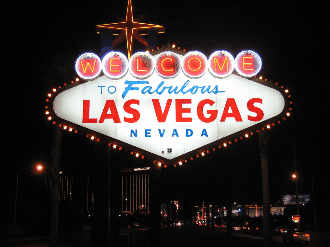
In yesterday’s article on the release of the latest US house price indices by Case-Shiller and the FHFA, one market stood out more than any other for the dramatic way in which home prices have collapsed: Las Vegas, Nevada.
According to the Case-Shiller index, house prices in ‘Sin City’ have fallen by a whopping 59% peak-to-trough, whereas at the state level, price are down 53% according to the FHFA. In inflation-adjusted (real) terms, the falls are even greater, as shown by the below charts:
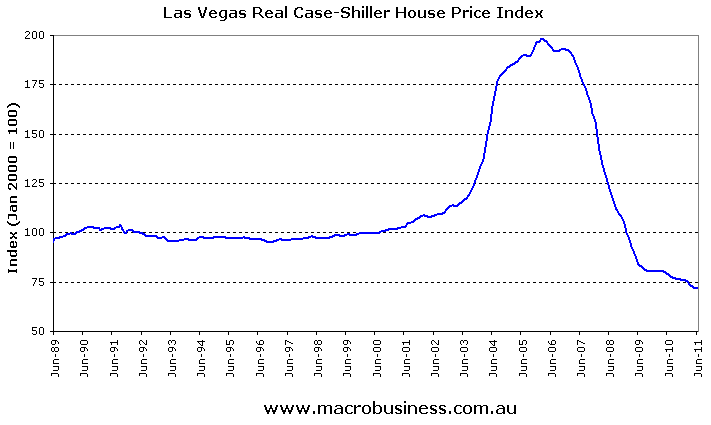
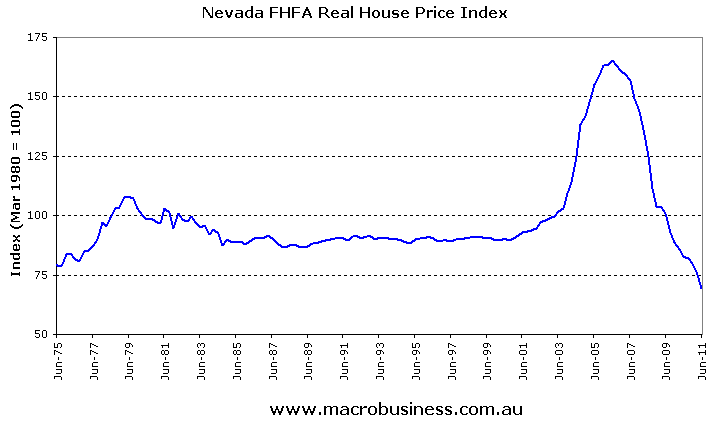
In the lead-up to the crash, the Las Vegas economy was riding high. The unemployment rate was below 5% and per capita incomes were growing strongly:
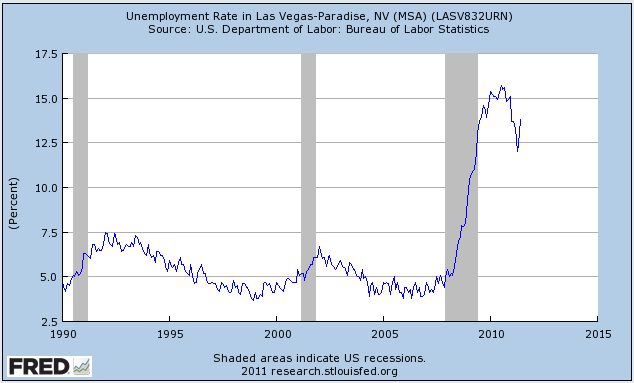
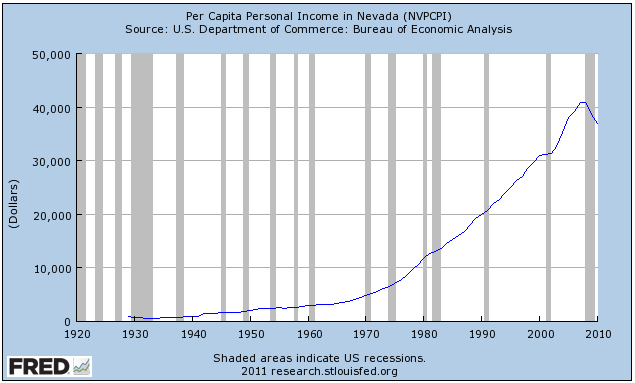
With confidence sky-high on the back of seemingly solid fundamentals and rising asset prices, along with easy access to credit, Nevada households borrowed heavily. Per capita debt accumulation exploded in the mid-2000s to levels far in excess of the national average:
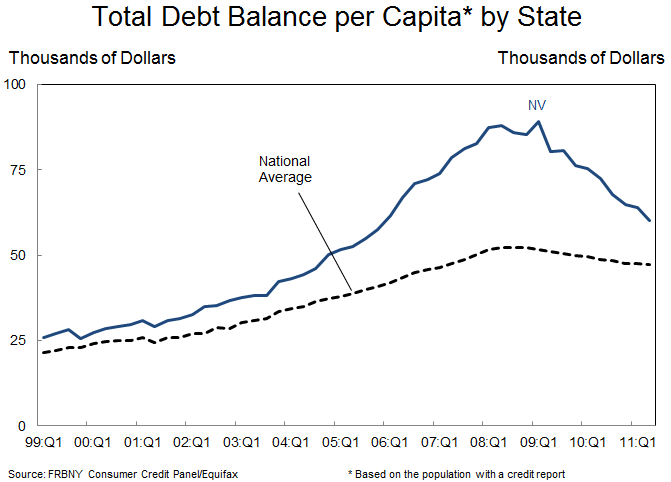
The overwhelming majority of this debt was held in mortgages as households chased house prices higher:
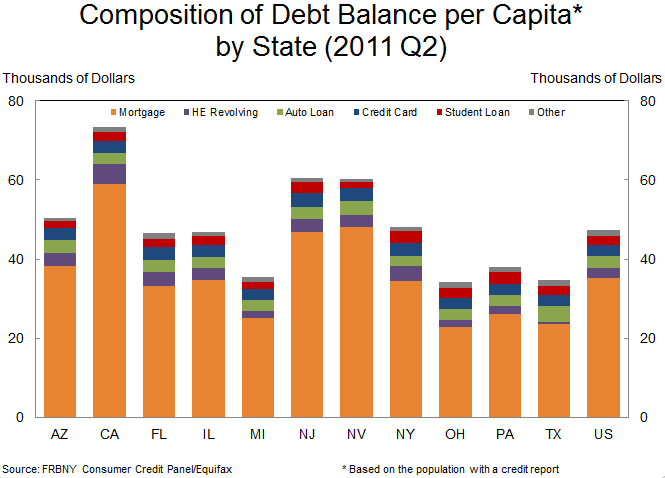
However, like all housing bubbles it was only a matter of time before the debt-fuelled party turned into one giant hangover. And with the national economy taking a turn for the worse in the wake of the sub-prime crisis and the collapse of Lehman Brothers, Las Vegas was destined to follow in its wake. After all, it is a tourist-based economy whereby around one-third of the city is employed in leisure and hospitality:
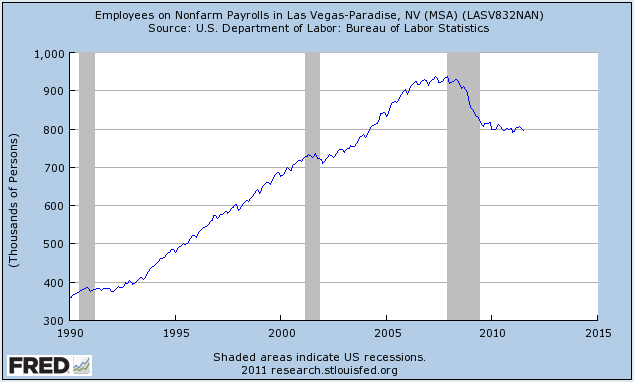
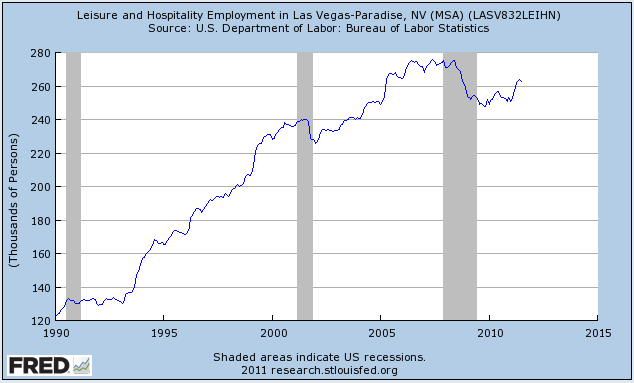
The rest is history. Home prices crashed, unemployment skyrocketed, and nominal per capita incomes fell for the first time in 80 years. Las Vegas is now home to one of the largest housing crashes in history.
And the pain is widespread, with around one in five mortgages 90 days in arrears – nearly three times the national average:
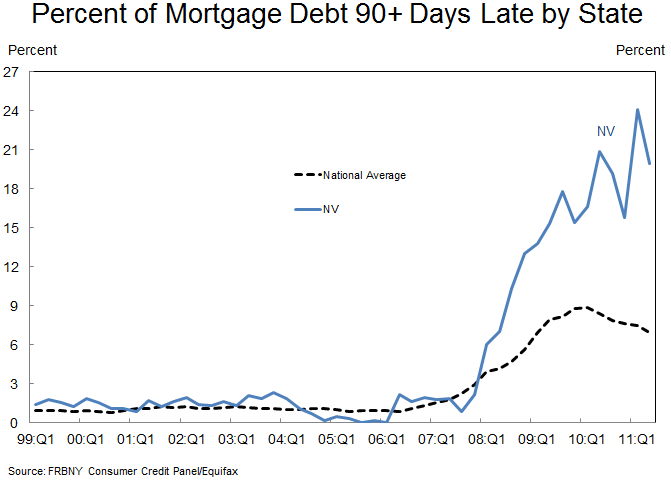
When conducting a housing post mortem, the question that always needs to be asked is: could anything have been done differently to prevent the housing bubble/bust?
Certainly, if credit was less readily available, households would have been constrained in their ability to bid-up prices. But easy credit was only part of the problem. Another key driver of the rampant price escalation and then collapse was the way in which land was supplied for housing.
Throughout the 2000s, Las Vegas was the fastest growing metropolitan area in the United States with more than 1,000,000 population (see below chart).
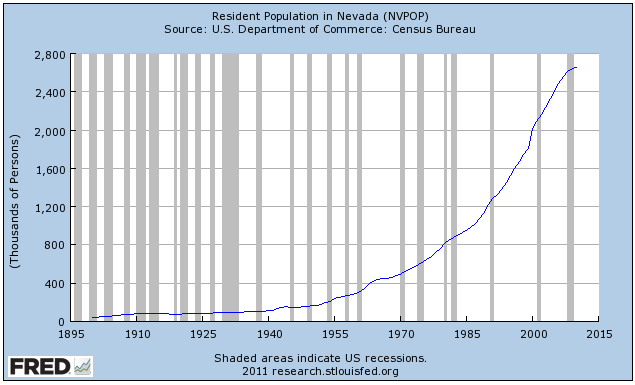
However, despite there being ample developable land within 40 miles of the Las Vegas city centre to accomodate this population growth, the actual quantity of land available for development was heaviliy restricted by the federal government Bureau of Land Management (BLM), which owns around 90% of the land in Clark County, which contains the entire Las Vegas urban area. The BLM heavily restricted sales of land to the market in an effort to maximise revenues, causing builders and developers to bid-up land price in period auctions to ensure their supply of land for construction (called ‘land banking’).
Whereas the price of land for housing generally sold for $40,000 per acre in the late 1990s, toward the peak of the bubble, average land prices fetched ten times that amount. Obviously, this land price inflation was a principal cause of the house price escalation as well as the sluggish supply response to the rapidly growing population and rising house prices (see below chart).
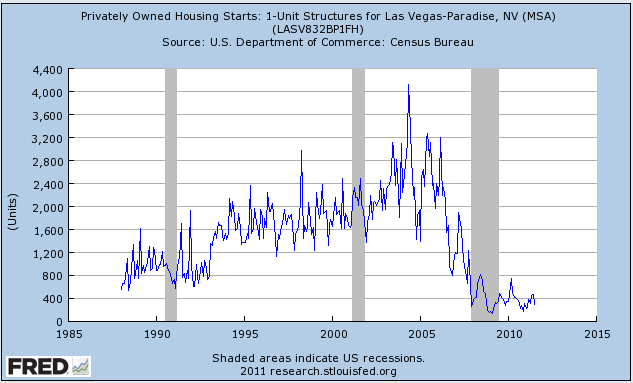
An article published in late 2006 in USA Today explains the supply situation in Las Vegas nicely:
LAS VEGAS — Flying into this desert metropolis is as deceiving as a mirage. From 10,000 feet you see empty land in all directions and swear the pace of suburban sprawl could go on unchecked.You’d swear no end’s in sight to subdivisions stretching for miles beyond the Strip, enclaves of single-family houses that draw thousands of Californians and other migrants a year.
Look again. The valley that Las Vegas and 1.8 million residents call home is nearly built out. Mountains, national parks, military bases, an Indian community and a critter called the desert tortoise have Sin City hemmed in. At the current building pace in the USA’s fastest-growing major metro area, available acreage will be gone in less than a decade, developers and real estate analysts say.
Yet growth pressure and housing demand won’t abate. Greater Las Vegas will add 1 million residents in the next 10 years, state estimates say, and hit 3 million by 2020.
“You hear anywhere from a seven to 10 years supply at our growth rates and the valley’s full,” says developer Kenneth Smith of Glen, Smith and Glen…
A scarcity of land — or just as important, says Hal Rothman, a University of Nevada-Las Vegas history professor, the perception that it’s scarce — is driving prices skyward. “The result was a rush,” he says. “The situation is making a new valley around us, one that will be more crowded and expensive.”
Developers who 15 years ago paid less than $40,000 an acre are paying more than $300,000 today. In an auction of public land that went on the market last year, a developer paid $639 million for 2,655 acres…
Developers are leapfrogging over BLM land with plans for big projects, such as 42,000-acre Coyote Springs 50 miles north of here. That’s “drive until you qualify” territory for home buyers seeking affordable mortgages. But costs of building roads, sewers and utilities “are incredible,” says Steve Bottfeld, senior analyst of Marketing Solutions, a local research firm. “Don’t look for it to happen in 10 years”…
Developers don’t expect land prices to fall. They’re packing houses in traditional subdivisions so close together neighbors can practically shake hands out their windows. Economics are moving developers toward a slow embrace of trends familiar elsewhere…
It’s hard to deny that if land had been freely available for development, developers would not have paid such high prices for the land sold by the federal government and Las Vegas home prices would never have risen to such dizzying heights or crashed as violently.
Las Vegas is yet another case study whereby excessive government interference in the supply of land (and/or the provision of housing) has mixed with easy credit to create a speculative bubble followed by a disorderly bust.

